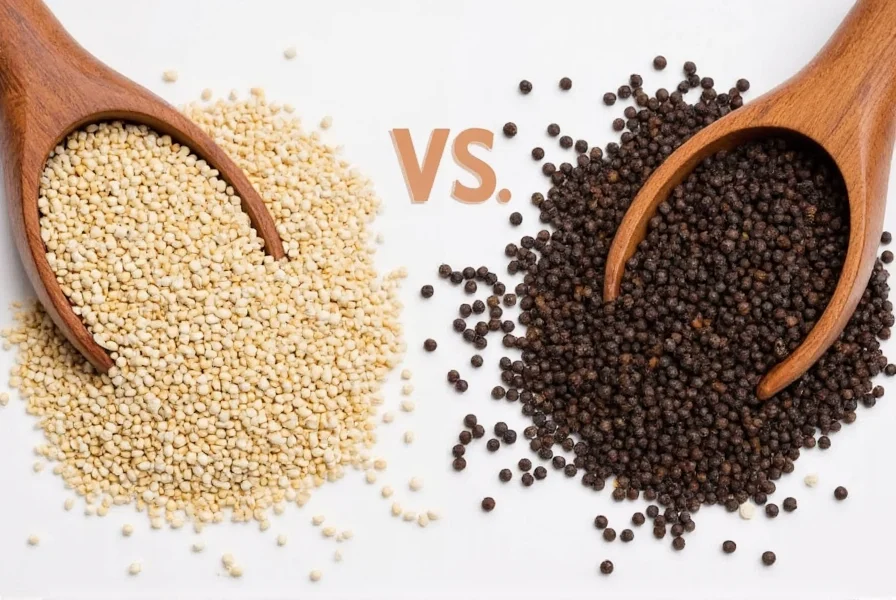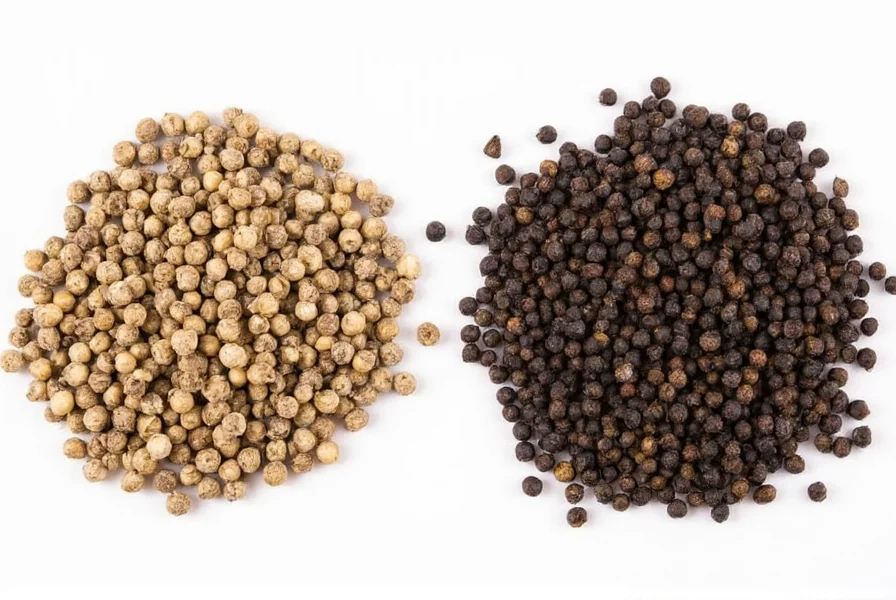Peppercorns, the dried berries of the Piper nigrum vine, have been prized in kitchens worldwide for centuries. While both white and black varieties come from the same plant, their distinct processing methods create significant differences in flavor, appearance, and culinary applications that every home cook should understand.
Understanding Peppercorn Processing
The journey from vine to spice jar determines whether a peppercorn becomes black or white. This processing difference is the foundation of all other variations between these two common spices.
Black Peppercorn Production
Black peppercorns begin as green berries harvested before full ripeness. These unripe berries are then sun-dried, causing the outer layer (pericarp) to shrivel and turn black. This natural fermentation process during drying develops black pepper's characteristic pungent, complex flavor with citrus and pine notes. The entire berry—including the outer skin, fruit layer, and seed—is preserved in the final product.

White Peppercorn Production
White peppercorns start as fully ripe red berries. After harvest, they undergo a soaking process in water for about a week, which causes the outer skin to soften and ferment. The skin is then mechanically removed, leaving only the inner seed, which is subsequently dried. This additional processing step removes the compounds responsible for black pepper's sharper notes, resulting in a more subtle, earthy flavor profile.
Flavor Profile Comparison
Understanding the taste differences between white peppercorn vs black peppercorn is essential for proper culinary application. These differences stem directly from their processing methods.
| Characteristic | Black Peppercorn | White Peppercorn |
|---|---|---|
| Flavor Intensity | Stronger, more pungent | Milder, more subtle |
| Primary Notes | Citrus, pine, floral | Earthy, musty, fermented |
| Heat Level | Sharper initial heat | Softer, more gradual heat |
| Aftertaste | Cleaner finish | Slightly longer, more complex finish |
Culinary Applications
The distinct flavor profiles of white peppercorn vs black peppercorn make each suitable for different cooking scenarios. Professional chefs select between them based on both taste requirements and visual considerations.
When to Choose Black Peppercorn
Black pepper shines in robust dishes where its complex flavor can complement other strong ingredients. It's ideal for:
- Meat rubs and marinades (steak, lamb, game)
- Dark sauces and gravies
- Roasted vegetables
- Hearty stews and soups
- Most everyday cooking applications
When to Choose White Peppercorn
White pepper's milder flavor and lack of visible specks make it preferable in:
- Light-colored sauces (béchamel, velouté)
- Seafood dishes
- Chicken and pork preparations
- Mayonnaise-based sauces and dressings
- Traditional Chinese and French cuisines
- Soups where visual presentation matters
Nutritional Differences
Both varieties contain piperine, the compound responsible for pepper's heat and many health benefits, but in slightly different concentrations. Black pepper typically contains about 5-9% piperine, while white pepper has slightly less at 4-7% due to the removal of the outer layer where some compounds concentrate.
Nutritionally, they're nearly identical, providing small amounts of manganese, iron, and vitamin K. The primary difference isn't nutritional but rather in their phytochemical profiles due to the processing methods. Black pepper retains more of the outer berry's compounds, which may contribute to its slightly higher antioxidant capacity.
Substitution Guide
When substituting white peppercorn vs black peppercorn, consider these guidelines:
- For every 1 teaspoon of black pepper, use 1¼ teaspoons of white pepper for equivalent heat
- When visual appearance matters (white sauces), white pepper is irreplaceable
- Black pepper can generally substitute for white pepper in most applications except delicate light-colored dishes
- For authentic Chinese or French cuisine, follow traditional recipes precisely as the pepper choice is intentional
Storage Recommendations
Both varieties maintain freshness longest when stored properly. Keep peppercorns in airtight containers away from light, heat, and moisture. Whole peppercorns retain their flavor for 2-3 years, while pre-ground pepper loses potency within 4-6 months. For maximum flavor impact, always grind peppercorns fresh using a pepper mill just before use.
Price and Availability
Black peppercorns are generally less expensive and more widely available than white peppercorns. This price difference stems from the additional processing required for white pepper. Specialty white pepper varieties (like French Tellicherry or Vietnamese Muntok) can be significantly more expensive than standard black Tellicherry peppercorns.
Final Considerations
Understanding the white peppercorn vs black peppercorn distinction empowers you to make more informed culinary decisions. Neither is objectively "better"—they're simply different tools for different purposes in your spice arsenal. Professional kitchens typically keep both varieties on hand to address the specific requirements of each dish. By recognizing when to use white peppercorn instead of black, you can elevate your cooking to match professional standards while respecting traditional culinary practices from around the world.











 浙公网安备
33010002000092号
浙公网安备
33010002000092号 浙B2-20120091-4
浙B2-20120091-4